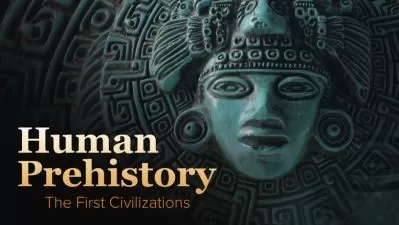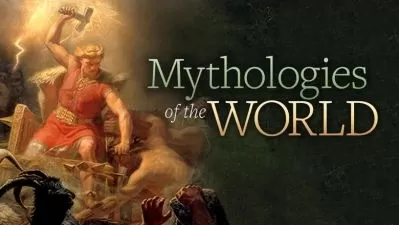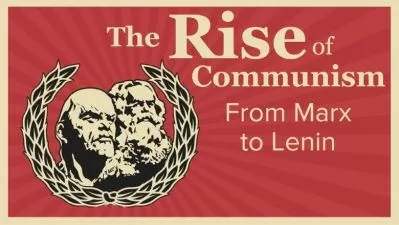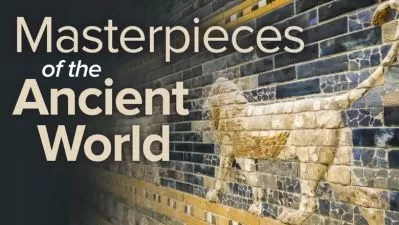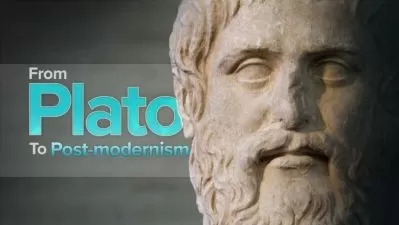Leonardo da Vinci and the Italian High Renaissance
George R. Bent
18:42:07
Description
In the grand history of the Western world, there is no single individual whose name is more synonymous with inventiveness, curiosity, and creative genius than Leonardo da Vinci. His life and works would not just remake the Renaissance in Italy—they would go on to inspire developments and innovations in our own world.
Leonardo has always exerted an extraordinary fascination. For unlike his artistic peers, such as Michelangelo and Raphael, who were known solely for their artistic accomplishments, Leonardo was the very epitome of the Renaissance man, whose skills and influences touched on nearly every aspect of human endeavor.
- As an artist, he helped develop artistic techniques of perspective, classical composition, and naturalism in works such as The Last Supper and the Mona Lisa.
- As an engineer, he devised marvelous inventions that aimed to transform the way people thought about warfare, transportation, and even plumbing.
- As a scientist, he exposed to everyday eyes the previously mysterious workings of human anatomy, the biology of various flora and fauna, and the properties of optics.
- As a thinker and writer, he advanced ideas and theories about art, mathematics, and science that would guide generations of other great minds.
- As a mentor, he inspired and prodded the techniques and careers of artists like Bramante, Michelangelo, and Raphael, who would go on to become masters of High Renaissance art and architecture as well.
And Leonardo continues to compel our interest long after his death and the subsequent end of the Renaissance he helped define. As expert art historian Professor George R. Bent of Washington and Lee University observes, "Without Leonardo, the things we know and the things we have just might not be with us today.”
Leonardo da Vinci and the Italian High Renaissance is Professor Bent's powerful and engrossing look at this grand master, the intriguing world he inhabited and shaped, and the legacies he left behind for us. This 36-lecture course—packed with illustrations and animations that bring you closer than ever before to Leonardo's paintings, sculptures, sketches, and notebooks—is like touring an imaginary and comprehensive exhibit devoted to his entire career. You'll gain fresh insights into his iconic paintings, his important anatomical studies, and his astonishingly prescient visions for machines we now take for granted. But more than that, you'll experience what it was like to live in Leonardo's world and to understand the High Renaissance as it swept through great Italian cities such as Florence, Milan, and Rome.
Live in Leonardo's World
Leonardo da Vinci was at the forefront of so many fields that a survey of everything he did can seem intimidating and nearly impossible. But Professor Bent has crafted Leonardo da Vinci and the Italian High Renaissance to be a highly focused, tightly organized examination of the life and times of this most famous Renaissance man.
The key: taking a chronological approach to Leonardo's collection of works, which sets each of his major masterpieces—as well as other works you may be less familiar with—in the larger context of political, social, spiritual, and cultural changes that swept through Italy between the mid-1400s and the early 1500s. Here, Professor Bent guides you through each of the three major stages of Leonardo's professional career:
- Florence from the 1460s to 1482
- Milan between 1482 and 1499
- Cities and regions including Venice, Rome, and western France from 1499 to 1519
As you follow Leonardo's movements, you learn how he secured work, how his surroundings helped inspire him, and how he interacted with some of the famous figures from the Italian Renaissance, including the Medici and Borgia families and fellow artists such as Michelangelo and Verrocchio. It's this multilevel look that makes this course transcend mere art appreciation and biography to become a unique framework in which to explore this profound period in Western history.
Discover New Ways to Appreciate Leonardo's Masterpieces …
Central to this course is Professor Bent's piercing examinations of Leonardo's work, which has gone on to influence generations of artists and thinkers. Professor Bent uses his expert knowledge of both Leonardo and Western art and history to unpack the hidden details and importance behind Leonardo's masterworks, drawing your attention to aspects you never noticed before, calling out techniques that were then revolutionary to art and science, and even shattering some well-worn myths and legends that have been passed down through the centuries.
In Leonardo da Vinci and the Italian High Renaissance, you'll feel as if you're encountering and understanding familiar pieces for the first time. Among these are
- the Virgin of the Rocks (1483–1486), which—more than any other 15th-century painting—epitomizes the High Renaissance style with its classical composition of Mary, John the Baptist, and the Christ child;
- the Vitruvian Man (c. 1487), Leonardo's iconic drawing of a man framed by both a square and a circle—two geometric shapes that presented the Christian idea of eternal life and God's desire to construct a balanced, symmetrical world on Earth;
- The Last Supper (1495–1498), a fresco whose use of symmetry, perspective, figural interaction, and intricate juxtaposition of chaos and serenity were heretofore unseen in a single composition; and, of course,
- the Mona Lisa. (c. 1503–1519), which openly defied the traditional approach to painting portraiture by experimenting with smoky contours (a technique known as sfumato) to suggest the subtle energy in the sitter's mysterious expression.
… as Well as Dozens of Other Works
You'll also comb through a host of
- schematics for innovative machines, including airplanes and parachutes;
- architectural diagrams for everything from church interiors to set designs for plays;
- anatomical studies of organs, muscles, and other features of the human body;
- drafts for and copies of paintings and sculptures that were lost, destroyed, or never realized; and
- notebooks and letters outlining Leonardo's thoughts and opinions on art and society.
As you go inside all of these works, you'll find revealing answers to commonly asked questions about Leonardo's style and technique. Here are just two:
Why did Leonardo write backward in his journals? Contrary to popular belief, Leonardo didn't write backward out of any concern over secrecy. Rather, it was a means to prevent the left-handed writer's billowing sleeves (fashionable attire for men in Renaissance Italy) from dragging across wet ink as he wrote.
Why were Leonardo's military inventions never realized? Despite their ingenuity, Leonardo's tanks, siege engines, flying machines, and submarines were often literally impossible to make. Many required an extraordinary amount of materials and a powerful source of locomotion that couldn't be provided in preindustrial Renaissance Italy.
Expertly Crafted, Richly Illustrated, Visually Engaging
As befitting a series of lectures on one of the world's greatest artists, this course has been crafted by Professor Bent to provide you with a learning experience that is as richly illustrated and visually engaging as it is insightful and informative. These lectures feature high-definition versions of Leonardo's paintings, drawings, sculptures, and other works; 3-D animations that bring Leonardo's never-realized inventions to life; intimate looks at pages and sketches from Leonardo's notebooks and manuscripts; and high-definition versions of works by Leonardo's contemoraries and apprentices. And Professor Bent himself is a scholar and teacher whose passion for Leonardo's work and world is absolutely riveting and undeniably contagious. Whether you're already familiar with the artist or have never closely examined him before, you'll find yourself raptly following along as Professor Bent recounts illuminating stories, provides eye-opening artistic insights, and reveals little-known details about life during the High Italian Renaissance.
So prepare yourself for a fascinating and unforgettable encounter with the quintessential Renaissance man in Leonardo da Vinci and the Italian High Renaissance—an immersive, comprehensive, and expertly delivered course that only The Great Courses can bring you.
More details
User Reviews
Rating
George R. Bent
Instructor's CoursesProfessor George R. Bent has taught in the Department of Art and Art History at Washington and Lee University since 1993. The holder of the Sidney Gause Childress Professorship in the Arts, Professor Bent offers courses on the art and architecture of Northern and Southern Europe from the fall of the Roman Empire to the end of the Renaissance—including lecture courses on medieval art in Byzantium and Italy, Italian Renaissance art, and Northern Renaissance art as well as seminars on the art of Venice, the High Renaissance in Italy, and Gothic art in France. A two-time holder of Fulbright Scholarships to Italy, Professor Bent received his B.A. from Oberlin College in 1985 and his Ph.D. in Art History from Stanford University in 1993. He cofounded Washington and Lee's interdisciplinary program in Medieval and Renaissance Studies in 1995, chaired it from 2000 to 2003, served as Associate Dean of the College from 2003 to 2006, and currently serves as chair of the Department of Art and Art History. Professor Bent's early scholarly work focused on issues of artistic production, the function of liturgical images, and institutional patronage in early Renaissance Florence. He is the author of Monastic Art in Lorenzo Monaco's Florence, a book that addresses these subjects through an examination of panel paintings, manuscript illuminations, and religious rituals performed in the monastery of Santa Maria degli Angeli from 1300 to 1415. Professor Bent's current research interests revolve around paintings produced for public spaces in Florence between 1250 and 1450, which have caused him to consider works such as Madonnas in street-corner tabernacles, frescoes of virtuous heroes in guildhalls, cult images that worked miracles for common people, and images of political propaganda that decorated offices of state bureaucrats. Professor Bent and his wife, Lorriann Olan, have three children, each of whom tolerates their father's obsession with the art and culture of the Italian Renaissance.

The Great Courses
View courses The Great Courses- language english
- Training sessions 36
- duration 18:42:07
- Release Date 2023/05/09






